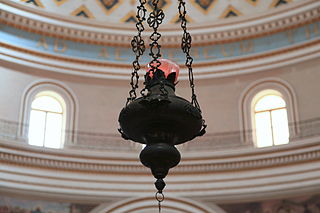 W
WSir Frederick Grant Banting was a Canadian medical scientist, physician, painter, and Nobel laureate noted as the co-discoverer of insulin and its therapeutic potential.
 W
WLocated on Parliament Hill in Ottawa, Ontario, Canada, the Centennial Flame commemorates Canada's 100th anniversary as a Confederation. The Flame was first lit as the climax of the centennial celebrations of January 1, 1967, in the presence of then Prime Minister Lester B. Pearson. He was joined on the hill by leader of the Opposition and former Prime Minister, John Diefenbaker, and Secretary of State, who was in charge of the Centennial, Judy LaMarsh as well as thousands of onlookers. The Flame is fuelled by natural gas and surrounded by a fountain whose ledge contains the shields of Canada's 13 provinces and territories—Nunavut was originally absent as it was not created until 1999. On December 13, 2017, a Nunavut plaque was unveiled.
 W
WA dhuni is a sacred site represented as a cleft in the ground. This cleft is emblematic of the yoni or female vulva and generative organ. A dhuni therefore represents a site of worship dedicated to Shakti.
 W
WAn eternal flame is a flame, lamp or torch that burns for an indefinite time. Most eternal flames are ignited and tended intentionally, but some are natural phenomena caused by natural gas leaks, peat fires and coal seam fires, all of which can be initially ignited by lightning, piezoelectricity or human activity, some of which have burned for a long time.
 W
WThe Eternal Flame is a memorial in the Park of Friendship in Belgrade, Serbia. It is dedicated to the military and civilian casualties resulting from the NATO bombing of Yugoslavia in 1999 and symbolizes the resistance of Serbian nation to the attack.
 W
WThe Eternal flame is a memorial to the military and civilian victims of the Second World War in Sarajevo, Bosnia and Herzegovina. The memorial was dedicated on 6 April 1946, the first anniversary of the liberation of Sarajevo from the four-year-long occupation by Nazi Germany and the fascist Independent State of Croatia.
 W
WThe Eternal Light Peace Memorial is a 1938 Gettysburg Battlefield monument dedicated on July 3, 1938, commemorating the 1913 Gettysburg reunion for the 50th anniversary of the 1863 Battle of Gettysburg on July 3, 1913. The natural gas flame in a one-ton bronze urn is atop a tower on a stone pedestrian terrace with views from the terraced hill summit over about 400 sq mi (1,000 km2), and the flame is visible from 20 mi (32 km) away.
 W
WThe John F. Kennedy Eternal Flame is a presidential memorial at the gravesite of assassinated United States President John F. Kennedy, in Arlington National Cemetery in Virginia. This permanent site replaced a temporary grave and eternal flame used at the time of President Kennedy's state funeral on November 25, 1963, three days after his assassination. The site was designed by architect John Carl Warnecke, a long-time friend of the president. The permanent John F. Kennedy Eternal Flame grave site was consecrated and opened to the public on March 15, 1967.
 W
WThe sacred fire of Vesta was a sacred eternal flame in ancient Rome. The Vestal Virgins, originally numbering two, later four and eventually six, were selected by lot and served for thirty years, tending the holy fire and performing other rituals connected to domestic life—among them were the ritual sweeping of the temple on June 15 and the preparation of food for certain festivals. By analogy, they also tended the life and soul of the city and of the body politic through the sacred fire of Vesta. The eternal burning of the sacred fire was a sign that determined eternal Rome.
 W
WA sanctuary lamp, chancel lamp, altar lamp, everlasting light, or eternal flame is a light that shines before the altar of sanctuaries in many Jewish and Christian places of worship. Prescribed in Exodus 27:20-21 of the Torah, this icon has taken on different meanings in each of the religions that have adopted it. The passage, which refers to prescriptions for the tabernacle, states:And thou shalt command the children of Israel, that they bring thee pure oil olive beaten for the light, to cause the lamp to burn always. In the tabernacle of the congregation without the veil, which is before the testimony, Aaron and his sons shall order it from evening to morning before the LORD: it shall be a statute for ever unto their generations on the behalf of the children of Israel. (KJV)
 W
WA torch is a stick with combustible material at one end, which is ignited and used as a light source. Torches have been used throughout history, and are still used in processions, symbolic and religious events, and in juggling entertainment. In some countries "torch" in modern usage is the term for a battery-operated portable light.